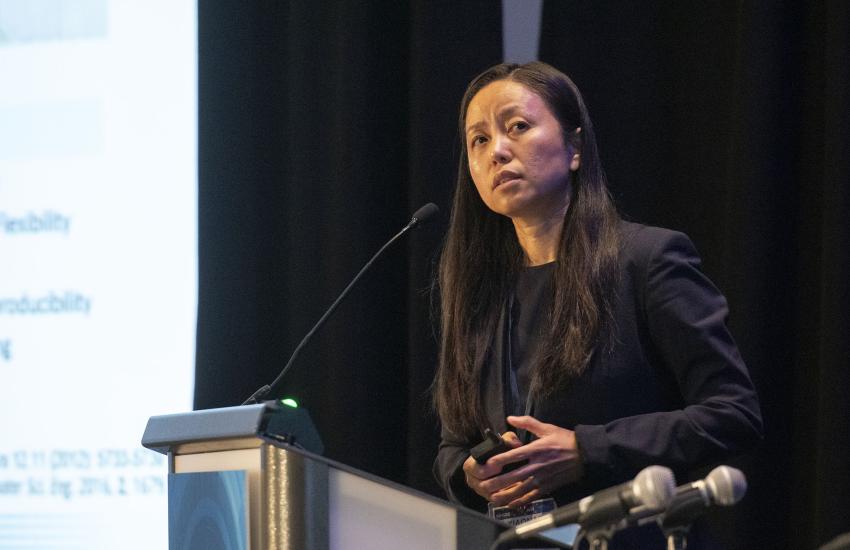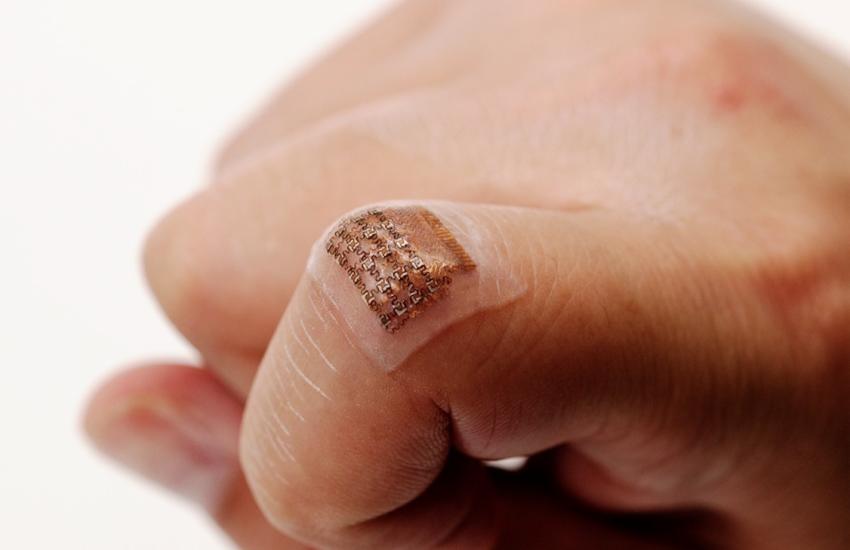The Big Truths Behind Small Machines
If you can see it, it probably is not nanotechnology. However, experts do see a growing market and great promise for health care, as well as military and national security missions.
This field works at nanoscale, specifically, objects with dimensions less than 100 nanometers (a nanometer is one-billionth of a meter). At this size, many components exhibit unique properties that differ from their behavior at larger proportions, whether at the atomic, molecular or bulk levels. These distinct characteristics open up new possibilities for innovations across various fields, including medicine, electronics and manufacturing, according to the World Health Organization, an international body.
The global nanotechnology market was valued at $79.1 billion in 2023. The market is projected to be worth $91.2 billion in 2024 and to reach $332.7 billion by 2032, according to Fortune Business Insights, a research company.
The same study explained that the COVID-19 pandemic boosted the nanotechnology market by driving advancements in diagnostics, drug delivery and materials science, leading to faster diagnostic tests and improved personal protective equipment and medical devices.
Currently, high costs hinder the development of this market.
These microscopic-sized technologies are being explored for their potential in diagnostics, therapies and the ability to penetrate the blood-brain barrier, which will transform treatments for conditions like traumatic brain injury, PTSD and other ailments more common among warfighters.
“You have this barrier that protects your brain, and the challenging part is that a lot of the therapies or molecules are too large, and they can’t get through most of the time,” said Mike Thomas, senior commercialization advisor at the NobleReach Foundation.
Making something small enough to challenge nature’s most intricate defenses is one problem; the other is getting it to its destination.
This makes micro-propulsion a growing sector. Electromagnetic fields or chemical propulsion are the most attractive thrust alternatives under research, but the latter is especially unsuitable for use in the human body as it leaves potentially hazardous particles behind.
The most immediate use science envisions is cell “labeling,” and cancer is the primary target for advancements in diagnostics, early detection and precision medicine, driven by both interest and high financial stakes.
“Carrying a payload of some kind of fluorescent chemical and get it to the right, let’s say, cancer cell, so that lights it up,” explained Thomas.

One of the most innovative techniques to move nano machines in the human body is the employment of ultrasound, which avoids chemical propulsion.
“We simulated the particles in water, but the propulsion is also suitable for other fluids and for tissue,” explained Johannes Voß from the Institute of Theoretical Physics and the Center for Soft Nanoscience at the University of Münster.
Once the machines can move toward the location in the body where they are needed, treatment quality increases.
“Vehicles that can do things in an exceptionally small level, which enables it to be very targeted, theoretically, have fewer side effects, less damage, less risk to the patient, and then a higher probability of success,” Thomas explained.
“In precision medicine and cancer, you’re going to see that taking the headlines over the next ten years for the nanorobot technology,” he added.
Nevertheless, this technology is not regulated, and beyond the initial research and lengthy clinical trials, there is another issue before bringing these treatments to patients.
“After FDA, you have Medicare payers, and then you have to figure out a reimbursement paradigm to be set up so that somebody can make money and make this thing self-sustaining. That doesn’t exist for this specific thing. You have to create it,” Thomas clarified.
Thomas also noted that while cancer research captures headlines, nanotechnology could also significantly improve smaller-scale challenges, especially within the military and emergency response sectors.
Nanotechnology also has dual-use potential, where innovations designed for military purposes could transition into civilian healthcare.
However, the transition from Department of Defense (DoD) applications to the broader systems is not straightforward due to the complexities of navigating different regulatory and market demands, according to Thomas.

Further integration happens with AI-driven smart nanosensors designed for noninvasive, continuous monitoring of high-risk surgical patients.
These sensors detect early signs of infection before symptoms appear, potentially offering a one- to two-day lead time for intervention.
“We can have real-time monitoring of the pathogens’ growth and the pathogen growth trends,” said Xiaonao Liu, CEO of NanoBioFAB, a medical technology company.
Liu’s business embeds tiny sensors in warfighters’ bandages and compares them to a “smoke detector” for infection, explaining that the sensors detect gases emitted by bacteria or fungi in wounds. These gases act as signatures, identifying specific pathogens in real time using advanced algorithms.
Further integration happens with artificial intelligence. These detectors offer early signs of infection before symptoms appear, potentially providing a one- to two-day lead time for intervention. Advanced algorithms read the particles, whether on the parts-per-million scale or the parts-per-billion scale.
Each pathogen has a signature gas emission..
Liu described the system as compatible with various wound care products and dressings.
“Our sensing area is 300 micrometers, and the sensor array is 6 millimeters,” Liu told SIGNAL Media.
The company manufactures these sensors in-house, utilizing patented technology to ensure high precision in tracking bacterial growth trends.
Liu also explained the technical challenge of distinguishing between different bacterial emissions, a complex process due to the minute differences in gas concentration. Despite these challenges, the technology promises significant advancements in early infection detection, potentially transforming wound care and patient outcomes.
This company already has a $3.3 million contract with the DoD and has also won a technology competition organized by AFCEA International in March.
Thomas stressed the importance of talent in the innovation process. Despite the rapid advances in AI and technology, he suggests that human talent remains essential to the success of start-ups and ventures, especially in the health care sector. He also shared news of a newly launched scholars program aimed at nurturing talent in the field of innovation.





Comments